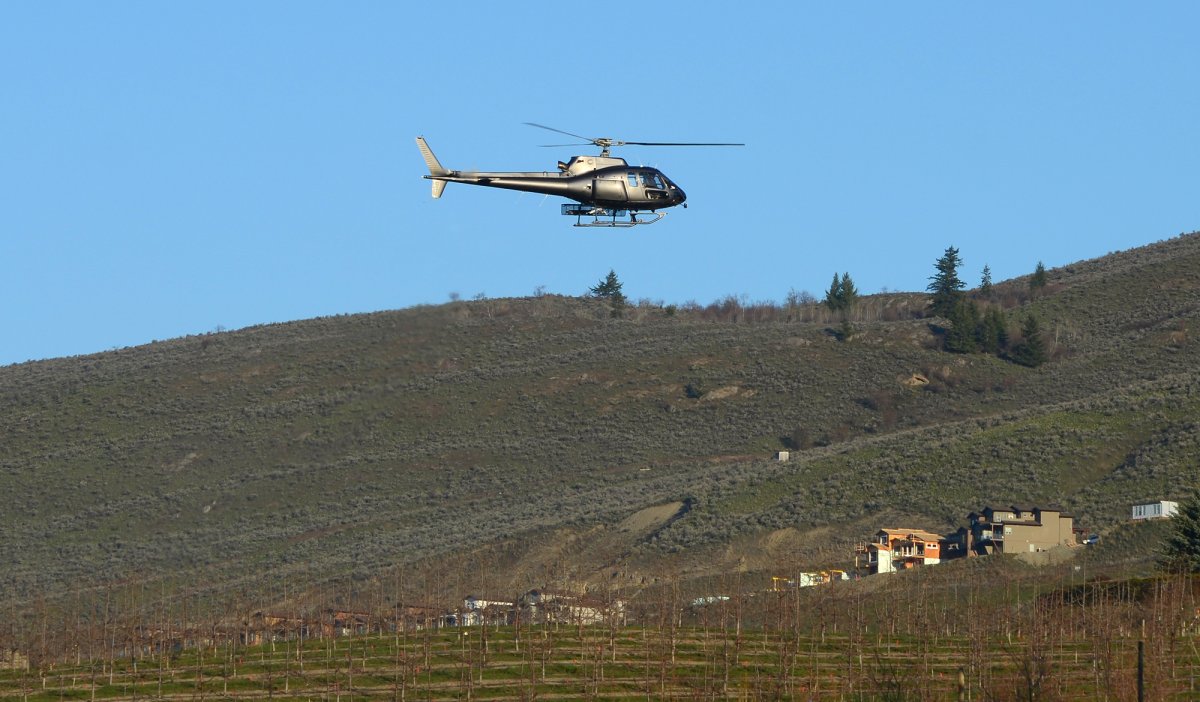The steady thrum of helicopters could be heard over a number of Okanagan cherry orchards this week, a tell-tale sign that farmers are working to mitigate the damage wrought by the recent spate of colder than normal days and nights.

“The unknown is how much damage was caused,” Glen Lucas of the BC Fruit Growers Association said.
“It will depend on what stage of growth the buds are at and how cold it gets.”
A little damage is OK, he said, but once it starts reducing volumes, it means less revenue. A good scenario from an ill-timed cold snap is a little bit of bud damage that thins the fruit and leaves what remains on the tree to grow to a more robust size. The worst-case scenario is “no crop.”
That extreme scenario has happened before with apricots, which are the first to be harvested in the valley. Next up are peaches, cherries and pears. Apples are the last to be harvested.
“We’ve not seen that with cherries, so that’s not expected,” Lucas said.

“That’s why they’re getting those wind machines and helicopters out there,” Lucas said. “It’s a lot of money to get those out and they’re trying to protect their fruit from damage.”
And, he pointed out, the mitigation methods work, particularly the helicopters, which push warmer air onto the trees.
“The grower on the ground will have a reading of a ground temperature and the helicopter pilot will also have a temperature reading in the air…. The helicopter’s downwash pushes the air down and mixes it up,” Lucas explained.
Cold air sinks and flows through low-lying areas.

Another tried and true method of dealing with cold weather includes installing a sizable fan on a metal post about nine metres high.
“There’s a propeller on the top and that’s to get that cold, ground-level air moving,” Lucas said. “Usually we get a slight temperature inversion and there’s a blanket of air that’s about 20 to 30 feet thick, and it’s colder.”
Frost fans push that air away.
Others simply have dodged the worst by locating their orchards on sloped areas because then the cold air will flow down the hill, through the orchard.
Lucas said it will likely be more than a month until it’s clear how much damage was caused. He’s hoping for the best but has been told that there have been cherry farms south of the border that have seen catastrophic cold damage. If that turns out to be true, it would see cherry prices rise.
It was so cold on Saturday that 23 temperature records were broken in B.C., some of which dated back 100 years.

Environment Canada meteorologist Dave Wray says current below-seasonal temperatures are due to an upper low, which is a cold air mass that has settled over the province.
He said conditions have been up to seven degrees below normal over the last week but predicts the mercury should climb toward more normal temperatures by the weekend.
—with files from The Canadian Press




Comments